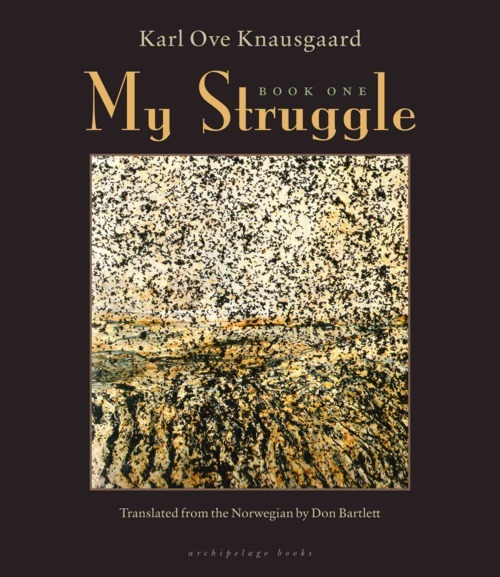“I was almost thirty years old when I saw a dead body for the first time. It was the summer of 1998, a July afternoon, in a chapel in Kristiansand. My father had died.” These sentences occur half way through A Death in the Family, and constitute the nub not only of the novel itself but of the six-book sequences of which it is the first volume. The book opens with a powerful disquisition on death, as the writer maintains our culture’s dangerous falsification of the subject by refusing to recognize the biological laws unswervingly in operation. A major reason for this whole ambitious fictional undertaking is, we soon realize, to offer refutation of such distorting views of existence. And what instance could be more effective for this purpose, in an overtly autobiographical work, than the narrator’s first confrontation with a corpse.
Further, the corpse is that of his own father, toward whom, as by this time we know, he felt not just resentment but consuming hatred, and whom he had banished from his life many years ago. The reference to Kristiansand is a resonant one also. By now Karl Ove has distanced himself from the coastal town where he grew up, where he went to school and where his grandparents had their home, and the centre of satellite communities with which he was once intimately familiar. In Part One of the novel we have experienced the Kristiansand district in winter, when the narrator was sixteen – snowy weather, games of football in raw conditions, listening indoors to discs of favorite groups, the hazards of making it to a New Year’s Eve party. The summer of 1998 is not offering him that fullness of life towards which adolescence strives but the ineluctable reality of death.
The novel’s very last page will give us Karl Ove’s second viewing of his dead father and his decisive epiphany. On this occasion he cannot see any difference between “what once had been my father and the table he was lying on, or the floor on which the table stood…And death, which I have always regarded as the greatest dimension of life, dark, compelling, was no more than a pipe that springs a leak, a branch that cracks in the wind, a jacket that slips off a clothes hanger and falls to the floor.”
The book of which this is a translation was called in Norwegian simply Min Kamp I (the U.S. edition, from Archipelago, gives it the more faithful title My Struggle), with Min Kamp II and III available weeks later. The Norwegian nomenclature ensured that the first book was not read as an autonomous entity. The enquiries it sets up – even into so definitive-seeming an event as the death of the novelists’ father – will not achieve resolution between one set of covers. Equally the author’s (sometimes extended) references here to immensely significant aspects of his life – his breakaway from familiar circumstances and environment, the dissolution of his first marriage, his move to Sweden, his second marriage, the birth of his first child – should be regarded as essentially scrupulous and reverberant pointers to what he will explore in detail and depth later on.
It becomes clear that Karl Ove Knausgaard is attempting nothing less than a highly personal A la Recherché du temps perdu, a view, from a position of comparatively successful individuation, of his own life and of the people it proffered him, either as givens (grandmother, father, mother, older brother) or as figures in a shifting, quotidian landscape (beautifully rendered with its seasonal changes of face), with whom some form of communication was possible, if often only at an ad hoc or institutional level. In this volume these last consist principally of school and neighborhood friends and do not include any female friends yet, but this, it is clear, is to change. The context of the writer’s presentation of his people is his hard-won acceptance (both intellectual and visceral) of physical development, of change, degeneration and death as inescapable facts of being which we largely refuse to honor as such. Knausgaard even censures our custom of referring to a deceased person in terms of the life that is over, when in grim truth he or she does have a continuation in the present: as rotting flesh in a coffin or as the product of an incinerator.
Karl Ove’s parents, of obvious importance to the initial volume, are from “the new educated middle class,” father a teacher, mother working at a nursing college. Though they externally accepted conventional ideas about family, professions and responsibility the inference to be made from the book is that inwardly they did not. The father was moody, erratic, often cruel-tongued, increasingly undependable, all characteristics of his growing addiction. Yet the mother – described as kind, sympathetic, with the lively interests in personalities that she shares with her younger son – was prepared to leave a sixteen-year-old in his precarious, often disquieting charge. To a British reader the society of which the Knausgaards are members is conspicuously egalitarian. Even within the peer group of the neighborhood boys, there is little differentiation between those who will join the professional class and those who will not. But Karl Ove’s preoccupations, even at his most wayward, are existential rather than societal, and this is endorsed by his interest in those movements through which the 1980s absorbed the previous two decades’ counterculture: indie label music, the graphic arts, non-ideological communes, to all of which Yngve, Karl Ove’s more affable and adjusted brother, was greatly drawn, inspiring his emulation.
There are surely sociological questions to be asked about the narrator’s father and his dreadful last thirteen years. Did the “newness” of his position as a professional man cause him inner unease? Did the community fail to give an intelligent man the necessary material to palliate his angst, his nagging exasperations? Similarly the narrator himself – who after all finishes up residing in another country – would appear to lack strong cultural ties to any single group or place. Yet Knausgaard belongs to an identifiable Norwegian tradition – Ibsen, Knut Hamsun, Edvard Munch, Tarjei Vesaas, Per Petterson – in his ability to achieve the frank, unfettered concentration on naked personal experience that is responsible for the magnificent section of A Death in the Family. Yngve, now married with children, and running a graphic design business, telephones Karl Ove, himself married and living in Bergen, no longer the loutish loner of Part One, and tells him their father has died. The brothers agree that Karl Ove will fly to Stavanger, from where, after recuperations at Yngve’s home, the pair will drive to Kristiansand, to their grandmother’s house where their father was found dead – unexpectedly in a literal sense, but, in light of the chaos into which they knew his mode of living had plunged him, an occurrence they has already imaginatively anticipated. Together they will make arrangements for his funeral.
After the intense proximity of childhood, the coolness of adolescence, and the inclusive intimacy of young manhood, the brothers’ paths have diverged. Now, brought together by a basic event and a central personage whom they have both detested and rejected (while mindful that other more tender emotions coexist with their hostility), Yngve and Karl Ove re-establish a relationship surely the profounder for being built without undue conscious intention. They enter the house of their father’s demise to find a stinking hell of filth, detritus and decay, feces, and breakages everywhere, and amid these their grandmother, senile, incontinent yet not without a ghastly, sometimes infectious, jollity. Later, they scour the place, a realistically described procedure that works as a kinesthetic metaphor for the psychological cleansing. The rapprochement of the two brothers is not only intensely moving, Karl Ove’s account makes Yngve emerge as a lucent and sympathetic character in his own right, his portrait both outwardly and psychologically attentive, and executed with palpable love.
The novel’s Yngve is, of course, real life Yngve Knausgaard, responsible for the jacket design for his brother’s prizewinning debut novel Ute av Verden (1998, “Out of this World”). Everybody who features in A Death in the Family existed or still exists. This state of affairs is indivisible from the fictional project itself, and has – with the author’s justifications, apologies and collusions – helped it to enjoy quite unprecedented “succes d’estime et de scandale” in Norway, from 2009 through to November 2011, when the sixth volume ofMin Kamp was published, which tackles the often controversial attentions granted to its predecessors. Over 400,000 copies have been sold, the ethical question of authors’ rights to take hold of others’ lives and expose them (or their interpretations of them) to the public has been extensively debated, and the distress of keydramatis personae widely broadcast. Although UK publishers have been circumspect in their publicity, news of all this attends the first volume’s appearance, and – in a society where Reception Studies are a respected discipline – it is impossible altogether to ignore it. The writing itself reveals authorial awareness of the moral audacity of his enterprise.
But this audacity (whatever Knausgaard’s later disclaimers about forgetting the rest of the world while he worked on his book) is absolutely intrinsic to the undertaking itself, from its far-from-unworthy ambition to make sense of everything that has happened in a single life, of everybody who as moved affectively through it, and to share that attempt with Western society, so helpless in the fact of completingWeltanschauungen that it desperately needs common ground to be unflinchingly and articulately explored. As an artifact Min Kamp is not lacking in post-Proustian parallels as its Scandinavian champions suggest. There is Henry Roth’s remarkable four-volume Mercy of a Rude Stream (1994-8). And there’s Anthony Powell’s – less uncompromisingly persona – A Dance to the Music of Time. What they are right to insist on, though, is the author’s literary integrity, his admirably, unflagging belief that every human experience, his own not excluded, deserves an artist’s devotion. And whether in the Thomas Bernhard-like ruminations on literature and time, his translator Don Bartlett has served him with impressive and galvanizing sensitivity, so that British readers, like the Norwegians, will be captured by Karl Ove’s narrative intensity.

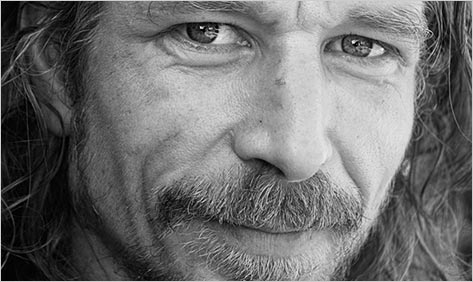
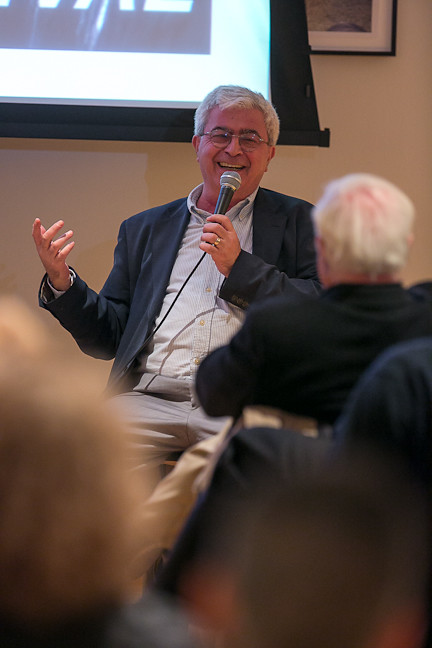
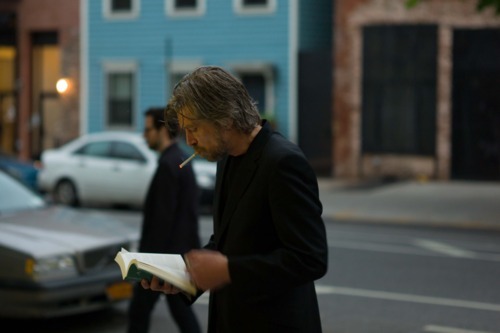
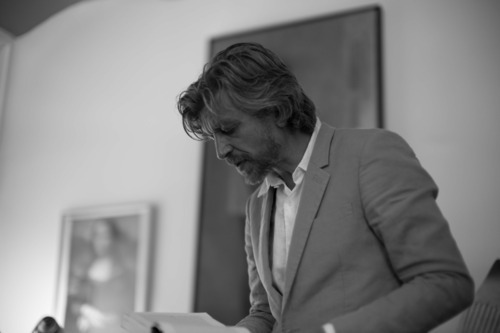
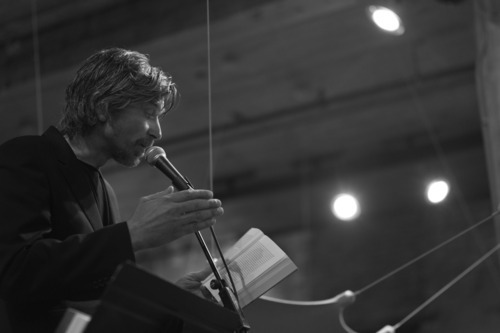
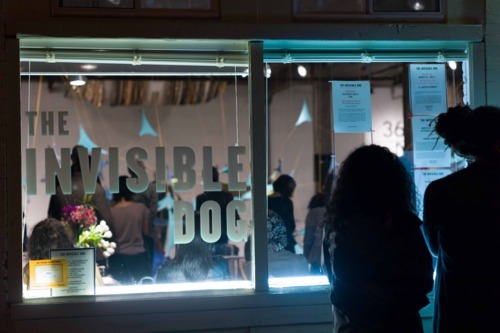
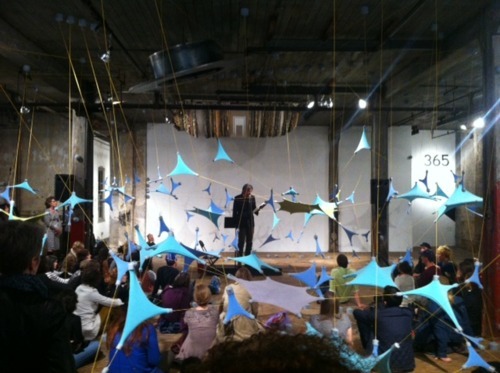
 CONGRATS to Bill Johnston, winner of the 2012 Best Translated Book Award for STONE UPON STONE.
CONGRATS to Bill Johnston, winner of the 2012 Best Translated Book Award for STONE UPON STONE.